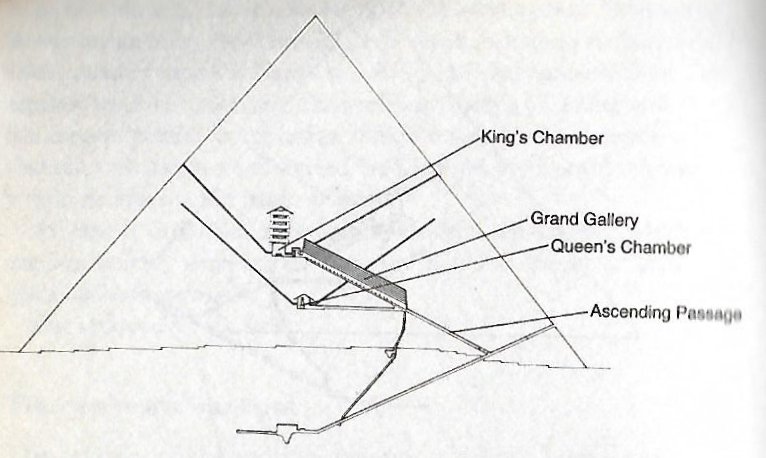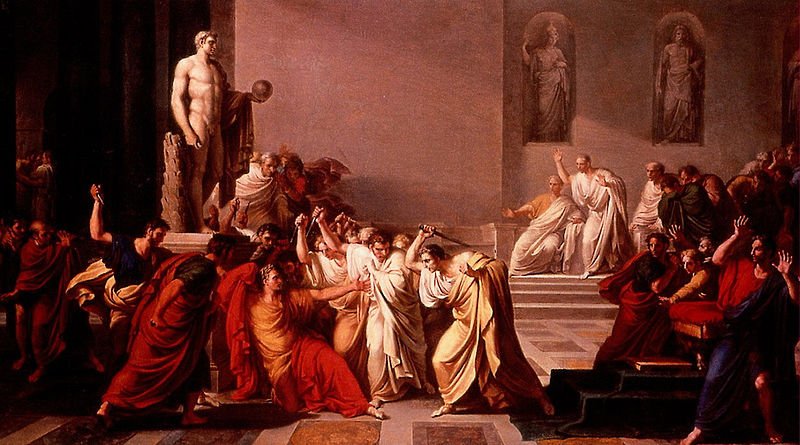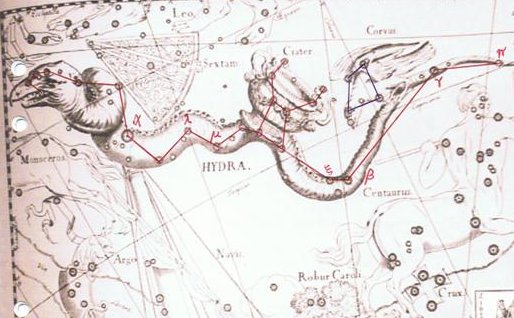4-8. We can now guess what stars the creator of the
E text might have had in mind for the beginning of each glyph line:
|
ALCYONE (*56) |
a1 |
32 |
32 |
b1 |
42 |
368 |
|
BETELGEUZE (*88) |
a2 |
33 |
65 |
b2 |
27 |
395 |
|
NAOS (*121 = *56
+ *65) |
a3 |
35 |
100 |
b3 |
38 |
433 |
|
TANIA
AUSTRALIS (*156) |
a4 |
36 |
136 |
b4 |
42 |
475 |
|
PORRIMA (*191) |
a5 |
42 |
178 |
b5 |
35 |
510 |
|
NUSAKAN (*156 +
*78) |
a6 |
39 |
217 |
b6 |
36 |
546 |
|
NASH (*273) |
a7 |
39 |
256 |
b7 |
42 |
588 |
| |
a8 |
*34 |
290 |
b8 |
40 |
628 |
| |
a9 |
36 |
326 |
sum |
302 |
| |
sum *326 |
sum total *628 → 2 * 314 |
And we should then with comparable confidence be able to continue with arranging
the glyphs in parallel with the stars which ideally the Full
Moon would have been located at when the Sun was 183 nakshatra days
away:
|
Febr
28 (424) |
March 1 |
2 (61) |
3 |
4 |
5 |
6 (65) |
7 |
|
→
INVISIBLY CLOSE TO THE SUN: |
|
ρ Gruis (344.0),
MATAR (Rain) = η Pegasi
(344.2), η Gruis (344.6), β Oct. (344.7 |
λ Pegasi (345.0), ξ Pegasi (345.1), ε Gruis
(345.3), τ Aquarii (345.7), ξ Oct. (345.8), μ
Pegasi (345.9) |
ι Cephei (346.0), λ Aquarii, γ Piscis Austrini,
σ Pegasi (346.5) |
SCHEAT AQUARII = δ
Aquarii
(347.0),
ρ
Pegasi (347.2),
δ
Piscis Austrini (347.4),
FOMALHAUT (Mouth of the Fish) =
α
Piscis Austrini,
τ
Gruis (347.8)
*306.0 = *347.4 - *41.4 |
FUM AL SAMAKAH (Mouth of the Fish) =
β Piscium
(348.3),
ζ
Gruis (348.5),
ο
Andromedae (348.9) |
Al Fargh al Mukdim-24 (Fore Spout)
/
Purva Bhādrapadā-26 (First
of the Blessed Feet)
/
House-13
(Pig)
SCHEAT PEGASI =
β
Pegasi,
π
Piscis Austrini (349.3),
κ
Gruis (349.4),
MARKAB PEGASI =
α
Pegasi
(349.5)
*308.0 = *349.4 - *41.4 |
23h (350.0 = 167.4 + 182.6)
υ, θ Gruis (350.0), π Cephei (350.6), ι Gruis
(350.9) |
SIMMAH = γ Piscium
(351.7) |
 |
 |
 |
 |
 |
 |
 |
 |
|
Ea4-7 |
Ea4-8 (108) |
Ea4-9 |
4-10 |
Ea4-11 |
Ea4-12 |
Ea4-13 |
4-14 |
|
kua te ariki - te hau tea |
te kihikihi |
henua huri hia |
te raa |
manu rere |
kua moe |
te ua - te ragi |
e inoino - marama - ragi |
|
Huri. 1. To turn
(vt.), to overthrow, to knock
down: huri moai, the overthrowing of the
statues from their ahus during the period
of decadence on the island. 2. To pour a
liquid from a container: ka huri mai te vai,
pour me some water. 3. To end a lament, a
mourning: he huri i te tagi, ina ekó tagi
hakaou, with this the mourning (for the
deceased) is over, there shall be no more
crying. 4. New shoot of banana: huri
maîka. Vanaga. 1. Stem. P Mgv.: huri,
a banana shoot. Mq.: hui, shoot, scion.
2. To turn over, to be turned over onto another
side, to bend, to lean, to warp; huri ke,
to change, to decant; tae huri ke,
invariable; huri ke tahaga no mai, to
change as the wind; tae huri, immovable;
e ko huri ke, infallible; huhuri,
rolling; hakahuri, to turn over;
hakahuri ke, to divine. P Pau.: huri,
to turn. Mgv.: huri, uri, to turn
on one side, to roll, to turn upside down, to
reverse. Mq.: hui, to turn, to reverse.
3. To throw, to shoot. 4. To water, to wet. 5.
To hollow out. Hurihuri: 1. Wrath, anger;
kokoma hurihuri, animosity, spite, wrath,
fury, hate, enmity, irritable, quick tempered,
to feel offended, to resent, to pester;
kokoma hurihuri ke, to be in a rage. 2. (huri
4) hurihuri titi, to fill up. 3. To
polish. 4. (uriuri). Hurikea, to
transfigure, to transform. Churchill. Mq.
huri, resemblance. Sa.: foliga, to
resemble. Churchill. |
|
VISIBLE
CLOSE TO THE FULL MOON: |
|
No star listed (161 →
φ) |
VATHORZ POSTERIOR = θ Carinae
(162.1),
PEREGRINI = μ Velorum,
η Carinae
(162.6) |
ν Hydrae (163.1) |
No star listed (164)
ALTAIR (α
Aquilae) |
Wings-27 (Snake)
η
Octans (165.4), ALKES (Shallow Basin) =
α
Crateris
(165.6)
*124.0 = *165.4 - *41.4 |
ANA-TIPU-4
(Upper-side-pillar - where the guards stood)
MERAK (Loin, not Lion) =
β
Ursae Majoris
(166.2),
DUBHE (Bear) =
α
Ursae Majoris
(166.7) |
11h (167.4)
χ
Leonis,
χ¹
Hydrae (167.1),
χ²
Hydrae (167.3)
*167.4 - *41.4 = *126.0 |
AL SHARAS (The Ribs)
=
β
Crateris
(168.6) |
|
Aug 29 |
30
(242) |
31 |
Sept 1 |
2 |
3 |
4 |
5
(248) |
|
... Dubb, more
generally Dubhe, the Bear, is the
abbreviation of the Arabians' Thahr al Dubb
al Akbar, the Back of the Greater Bear, Dubb
being first found in the Alfonsine Tables.
Al Bīrūnī said that it was the Hindu Kratu,
the Rishi or Sage. Lockyer asserts that it was
Āk, the Eye, i.e. the prominent one of
the constellation, utilized in the alignment of
the walls of the temple of Hathor of Denderah,
and the orientation point of that structure
perhaps before 5000 B.C.; at all events, before
the Thigh became circumpolar, about 4000 B.C.
This was in the times of the Hor-she-shu, the
worshipers of Horus, before the reign of Mena,
when the star had a declination of over 64°, -
now about 62° 24'. Mena, Menes, or Min was the
first historic king of Egypt, his date being
variously given from 5867 B.C. to 3892
B.C., Flinders
Petrie making it, from astronomical data, 4777
B.C. And he finds two other temples also so
oriented. As typifying a goddess of Egypt, it
was Bast Isis and Taurt Isis. The
Chinese know it as Tien Choo, Heaven's
Pivot, and as Kow Ching ...
 |
Counted 10 days after Ea4-12, when in March 5 (64) the Full Moon
would
(ideally) be at Dubhe, the Full Moon ought to be at
the right ascension line *176 (→
2 * 88) of ο Hydrae and
this was at Idus (March
15) - a very low point indeed:

|
March 8 |
9 |
10 (*354) |
11 |
12 |
13 |
3-14 |
15
→ Idus |
|
→
INVISIBLY CLOSE TO THE SUN: |
|
φ Aquarii (352.0), ψ Aquarii (352.4), χ Aquarii
(352.6), γ Tucanae (352.8) |
ο Cephei (353.3),
KERB (Bucket Rope) = τ
Pegasi
(353.6) |
κ Piscium (354.2),
θ Piscium (354.4), υ Pegasi (354.9)
*313.0 = *354.4 - *41.4 |
ο Gruis,
Snowball Nebula = NGC7662 Andromedae
(355.0), τ Oct. (355.3) |
No star listed (356) |
ι Phoenicis (357.3),
ι Piscium (357.4), λ Andromedae (357.9)
*316.0 = *357.4 - *41.4 |
λ Piscium (358.0),
MANUS CATENATA
= ι Andromedae
(358.1),
θ
Phoenicis, ALRAI = γ Cephei (358.4),
κ Andromedae (358.7)
*358.4 - *41.4 = *317.0 |
ω Aquarii (359.2),
78 Pegasi
(359.5) |
 |
 |
 |
 |
 |
 |
 |
 |
 |
|
Ea4-15 |
Ea4-16 |
Ea4-17 |
Ea4-18 |
Ea4-19 |
4-20 |
Ea4-21 |
Ea4-22 (122) |
|
inoino - ragi |
te vaha mea |
ki haga o rave hia |
te vaha |
te rima |
te ua |
te hokohuki - kiore kikiu |
hokohuki - koia ra - ku kikiu |
|
Rave.
Ta.: Rave, to take. Sa.:
lavea, to be removed, of a disease. To.:
lavea, to bite, to take the hook, as a fish.
Fu.: lave, to comprehend, to seize. Niuē:
laveaki,
to convey. Rar.: rave,
to take, to receive. Mgv: rave,
to take, to take hold; raveika,
fisherman. Ma.: rawe,
to take up, to snatch. Ha.: lawe,
to take and carry in the hand. Mq.:
ave, an
expression used when the fishing line is caught
in the stones. Churchill 2.
Hoki.
To return, to go back, to come back; ka hoki
ki rá, go back there! ana oho koe ki
Hiva, e hoki mai ki nei, if you go to the
mainland, do come back here again. Vanaga. 1.
Also, what; ki ra hoki, precisely there;
pei ra hoki, similitude, likeness; pei
ra hoki ta matou, usage. P Pau.: hokihoki,
often. Mgv.: hoki, also, and, likewise.
Mq.: hoi, surely. Ta.: hoi, also,
likewise. 2. To return, to turn back, to draw
back, to give back, to tack; mau e hoki mai,
to lend; hoki hakahou, to carry back;
hoki amuri, to retrograde; hakahoki,
to bring back, to send back, to carry back, to
restore, to renew, to revoke, to remove, to
dismiss, to pay, to pardon, to compress;
hakahokia, given up; hakahokihaga,
obligation. P Pau.: hokihoki, to persist,
to insist; fakahoki, to give back. Mgv.:
hoki, to return, to retrace one's steps;
oki, to return, to come back. Ta.: hoi,
to return, to come back. Ta.: mahoi, the
essence or soul of a god.
Churchill.
Ko.
1. Article (ko te); preposition: with
(see grammar); prefix of personal pronouns:
koau, I; kokoe, you (singular);
koîa, he, she, it; kokorua, you
(plural); ko tagi, koîa, he with his
weeping. 2. Article which precedes proper nouns,
often also used with place names: Ko Tori, Ko
Hotu Matu'a, Ko Pú. Koîa, exact:
tita'a koîa, exact demarcation. Seems to be
the personal pronoun koîa - applied in
the meaning of: thus it is, here it is
precisely. Vanaga. 1. Negative; e ko,
not, except; e ko ora, incurable; ina
ko, not; ina ko tikea, unseen; ina
e ko, not; ina e ko mou, incessant.
2. A particle used before nouns and pronouns;
ko vau, I; ko te, this; ko mea
tera, this; ati ko peka, to avenge,
ko mua, first, at first, formerly. 3.
There, yonder. P Mgv.: ko, over there,
yonder. Ta.: ó, there, here.
Churchill.
Kikiu.
1. Said of food insufficiently cooked and
therefore tough: kai kikiu. 2. To tie
securely; to tighten the knots of a snare:
ku-kikiu-á te hereíga, the knot has been
tightened. 3. Figuratively: mean, tight, stingy;
puoko kikiu. a miser; also: eve kikiu.
4. To squeak (of rats, chickens). Kiukiu,
to chirp (of chicks and birds); to make short
noises. The first bells brought by the
missionaries were given this name. Vanaga.
Kiukiu (kikiu). 1. To resound, to
ring, sonorous, bell, bronze; kiukiu rikiriki,
hand bell; tagi kiukiu, sound of a bell;
kikiu, to ring, the squeeking of rats;
tariga kikiu, din, buzzing; hakakiukiu,
to ring. Mgv.: kiukiu, a thin sound, a
soft sweet sound. 2. To disobey, disobedience;
mogugu kiukiu, ungrateful; ka kikiu ro,
to importune.
Churchill.
... I became
interested in what really happened at March 15
and reopened Henrikson to find out: Caesar was
forewarned of the threat by the prophet
Spurinna, who told him that a great threat was
coming at Idus Martiae or just
before. The day arrived and Caesar was still
living. He was walking to his meeting with the
Senate when he happened to encounter Spurinna
and told him jokingly that he was still alive.
Spurinna calmely answered that the day had yet
not ended. The Romans divided their months in
two parts and the dividing point was Idus,
which in some way was connected with full moon.
March 15 was the midpoint of March, which is
close to spring equinox. The old agricultural
year defined the beginning of the year to the
time when sun returned, and it was connected
with Mars
...
 |
|
VISIBLE
CLOSE TO THE FULL MOON: |
|
Al Zubrah-9 (Mane)
/
Purva Phalguni-11 (First Reddish One - Fig Tree)
ZOSMA (Girdle, not Belt) =
δ
Leonis
(169.2),
COXA (Hips)
=
θ Leonis (169.4)
*169.4 - *41.4 = *128.0 |
φ
Leonis (170.0),
ALULA
(First Spring of the Gazelle)
=
ξ,
ν
Ursae
Majoris
(170.5),
LABRUM =
δ
Crateris
(170.6) |
σ
Leonis (171.1),
λ
Crateris (171.6),
ι
Leonis,
ε
Crateris (171.9) |
γ
Crateris, π
Centauri (172.0),
κ
Crateris (172.5),
τ
Leonis (172.8)
GREDI (α Capricorni) |
ο¹ Centauri (173.8) |
GIAUZAR = λ Draconis
(174.0), ξ Hydrae (174.3), ο² Centauri, λ
Centauri (174.8) |
θ
Crateris (175.0),
υ
Leonis (175.2),
ω
Virginis (175.3),
ι
Crateris (175.5) |
ο Hydrae
(176.1) |

.jpg) |
|
Sept 6 |
7 |
8 |
9 |
10 |
11 (254) |
12 (73 +
182) |
13 (56 +
200) |

|












.jpg)
